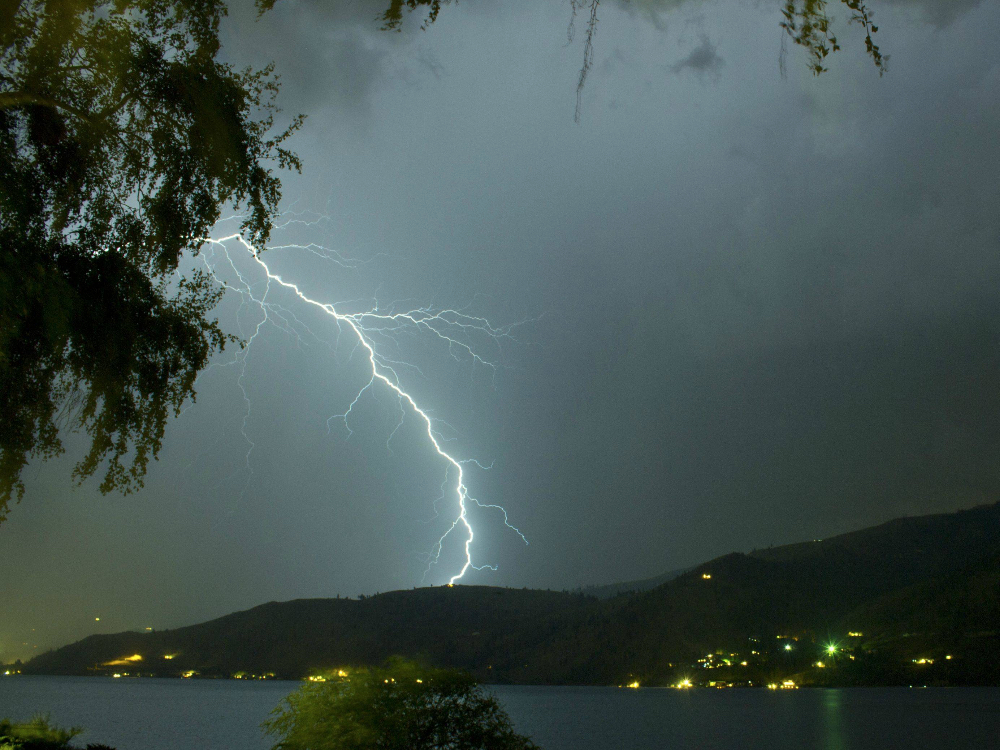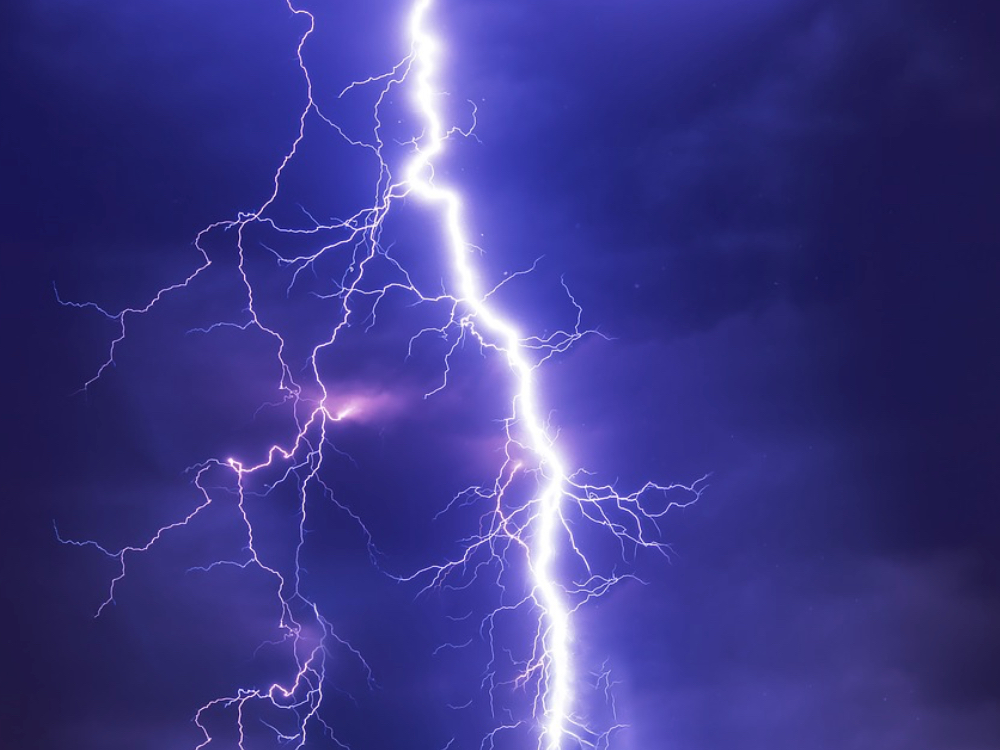⚡️⚡️ Lightning: What You Need to Know⚡️⚡️
Information compiled from the National Lightning Safety Institute and NOAA
Summer thunderstorms are common in North Central and Eastern Washington. The National Severe Storms Laboratory indicates that three basic ingredients are required for a thunderstorm to form: moisture, rising unstable air (air that keeps rising when given a nudge), and a lifting mechanism to provide the “nudge.”
The sun heats the surface of the earth, which warms the air above it. If this warm surface air is forced to rise—hills or mountains, or areas where warm/cold or wet/dry air bump together can cause rising motion—it will continue to rise as long as it weighs less and stays warmer than the air around it.
According to the National Oceanic and Atmospheric Administration (NOAA) National Weather Service, approximately 1,800 thunderstorms are occurring at any given time, resulting in about 16-million thunderstorms each year. Most thunderstorms last about 30 minutes and are typically about 15 miles (24 km) in diameter. The two biggest threats associated with most thunderstorms are lightning and flash floods.
During last Tuesday’s storm, the National Weather Service in Spokane recorded almost 3,500 cloud to ground lightning strikes, and 28,630 cloud flashes, resulting in several area fires.
The National Lightning Safety Institute would like to provide these important safety tips (shared from Chelan Fire & Rescue):
NO PLACE outside is safe when thunderstorms are in the area!
*If you hear thunder, lightning is close enough to strike you.
*When you hear thunder, immediately move to safe shelter.
*Safe shelter is a substantial building or inside an enclosed, metal-topped vehicle.
*Stay in safe shelter at least 30 minutes after you hear the last clap of thunder.
Indoor Lightning Safety Tips
1) Stay off corded phones, computers and other electrical equipment that put you in direct contact with electricity.
2) Avoid plumbing, including sinks, baths and faucets.
3) Stay away from windows and doors, and stay off porches.
4) Do not lie on concrete floors, and do not lean against concrete walls.

Lightning at Lake Chelan, Pinterest
If Someone is Struck by Lightning
1) Victims do not carry an electrical charge and may need immediate medical attention.
2) Monitor the victim and begin CPR or AED, if necessary.
3) Call 911 for help.
Last Resort Outdoor Risk Reduction Tips
If you are caught outside with no safe shelter anywhere nearby, the following actions may reduce your risk.
1) Immediately get off elevated areas such as hills, mountain ridges or peaks.
2) Never lie flat on the ground.
3) Never use a tree for shelter.
4) Never use a cliff or rocky overhang for shelter.
5) Immediately get out and away from ponds, lakes and other bodies of water.
6) Stay away from objects that conduct electricity (barbed wire fences, power lines, windmills, etc.).
7) Under no circumstances should any of the above actions be taken if a building or an all-metal vehicle is nearby.
Personal Lightning Safety Tips
1) PLAN in advance your evacuation and safety measures. When you first see lightning or hear thunder, activate your emergency plan. Now is the time to go to a building or a vehicle. Lightning often precedes rain, so don’t wait for the rain to begin before suspending activities.
2) IF OUTDOORS Avoid water. Avoid the high ground. Avoid open spaces. Avoid all metal objects including electric wires, fences, machinery, motors, power tools, etc. Unsafe places include underneath canopies, small picnic or rain shelters, or near trees. Where possible, find shelter in a substantial building or in a fully enclosed metal vehicle such as a car, truck or van with the windows completely shut. If lightning is striking nearby when you are outside, you should:
- Crouch down. Put feet together. Place hands over ears to minimize hearing damage from thunder.
- Avoid proximity (minimum of 15 ft.) to other people.
3) IF INDOORS Avoid water. Stay away from doors and windows. Do not use the telephone. Take off headsets. Turn off, unplug and stay away from appliances, computers, power tools & TV sets. Lightning may strike exterior electric and phone lines, inducing shocks to inside equipment.
4) SUSPEND ACTIVITIES for 30 minutes after the last observed lightning or thunder.
5) INJURED PERSONS do not carry an electrical charge and can be handled safely. Apply First Aid procedures to a lightning victim if you are qualified to do so. Call 911 or send for help immediately.
6) KNOW YOUR EMERGENCY TELEPHONE NUMBERS.
Be Prepared. And Be Safe.








